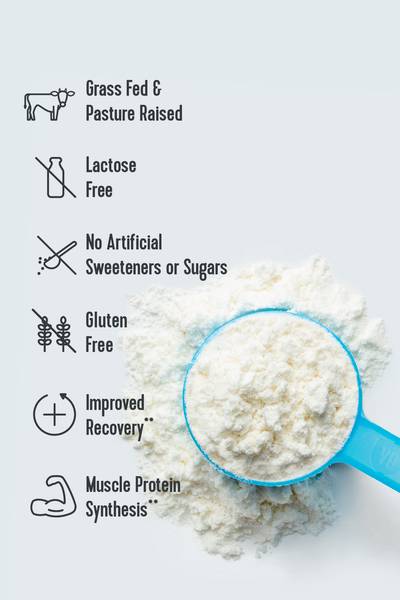Ever been in a gym and noticed bright yellow straps hanging from the ceiling and wondered what the heck they are? TRX suspension trainers can look intimidating, but TRX exercises are a great way to get a solid workout in, no matter your fitness level. They can help you build a solid core, get in a low-impact workout and even work mobility.
To help you out, we tapped Marc Coronel, CPT and TRX Senior Master Course Instructor for a crash course in everything you need to know about TRX exercises — plus he created an exclusive workout (complete with GIFs to follow along) for you to try.
Vital Note: This article has been made available for informational and educational purposes only. It is not intended to be a substitute for professional medical advice, diagnosis, or treatment. Always seek the advice of your physician or another qualified health provider with any questions you may have regarding a medical condition. Your licensed healthcare professional can best provide you with the diagnosis and treatment of any medical condition and assist you as well in deciding whether a dietary supplement will be a helpful addition to your regimen.
What does TRX Workout stand for?
A TRX workout means you get to leverage your bodyweight on the suspension trainer for your workouts. TRX stands for Total (body) Resistance eXercise). It is a suspension trainer characterized by a single-point suspension anchor. The apparatus creates instability from the top down, which forces you, as the participant, to create stability from bottom up.
"Where the TRX slogan, 'all core all the time,' comes in is that to create stability, you need to engage your core," Coronel says.
Remember, your core is everything between your collarbone and middle of your thigh, plus all the musculature that protects your spine. TRX exercises are a total-body workout.
Related Articles
Is TRX a good workout?
Yes, TRX is a great workout, Coronel says. It's portable, light, you can use it anywhere — there are over 1,000 exercises you can do. And, it's not just "fitness" you can do, either. TRX exercises can also include yoga, strength-building and mobility work.
What are the benefits of TRX?
TRX training is unilateral, so it can help show you imbalances in your body as well as being able to train the traditional spectrum of cardio, strength and flexibility. Depending on your goals, it can assist you or it can amplify what you're looking to do.
Is TRX training good for weight loss?
Yes, TRX training is good for weight loss. You can use it every day, but your workouts will always be something different.
"You can work strength and mobility, while keeping it light and low impact, but you still have the ability to get heart rate up really high," Coronel says.
By training movement in each muscle, you can get stronger pound for pound.
Is TRX Good for beginners?
Yes — It's great for you but it's also great for your grandmother because TRX systems are able to be used for different goals and fitness levels, Coronel tells Lively.
Ready to add TRX exercises to your routine? Try this workout below, created by Coronel.
How to do it: The workout below is made up of 6 moves total in 3 blocks of back and forth (think exercise A to exercise B). Complete 10 to 15 reps of each move and repeat each set 2 to 3 times before moving onto the next.
Exercise A: TRX Front Squat

Start with straps fully lengthened. Stand and face away from the anchor point with straps under arms and hands/knuckles on chest. Walk back until you can't push your heels on the floor, brace core and hold body like a surfboard. Bend knees and drop hips to heels. Drive in to feet and return to starting position.
Exercise B: TRX Chest Press

Start with straps fully lengthened. Stand facing away from the anchor point, arms extended out in front of you like you're sleepwalking. With knuckles facing away, bend an imaginary bar. Lower yourself down to where your thumbs meet your chest while maintaining active plank, then drive knuckles away to return to starting position.
Exercise A: TRX Mid Row

Start with straps fully shortened. Stand facing the anchor point, thumbs on chest with arms at a 45°. Lower yourself by extending the arms and maintaining the plank. Then drive the elbows back as you return to thumbs on chest.
Exercise B: TRX Alternating Crossing Balance Lunge

Start with straps mid-length. Stand facing the anchor point, elbows by ribcage and feet under hips. As you extend the arms, take your right foot across and behind the left, foot touches then knee goes toward floor, or balance by only touching the knee (no foot or shin). Bring both feet back together then repeat on opposite side.
Exercise A: TRX Hamstring Curl

Start with straps at mid-calf. Lie face-up, facing your anchor point with heels in, head on the floor and arms out to the sides. Press down through heels and lift hips off the floor. Drag knees in so they’re over the hips, then press heels out to return to start.
Exercise B: TRX Oblique Crunch

Start with strapsat mid-calf.Lie face-up, facing away from the anchor point, toes in, on elbows or hands under shoulders. Push the ground away and come to an active plank. Bring both knees to one side, then press legs back out to plank and switch sides. Make sure to keep active feet (think toes toward your nose).















